US version, $29.95
Softbound, 8.25 x 7.75 inches, 128 pages, color and B&W
Published by Veloce Publishing LTD, Dorchester, England
ISBN 13: 978-1-84584-041-9
Order here
Review by Pete Vack
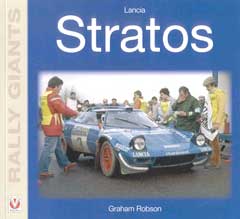
Like no other Lancia before or after, the Stratos came out of left field, suddenly, without warning, and for a decade streaked across the rally landscape like a brilliant comet.
Discarding past principles while fearlessly representing something new, the Stratos left enthusiasts and rally fans breathless.
There is probably no one better to write the story of the Lancia Stratos than Brit Graham Robson. (Read Graham Robson Interview.) The author of over 130 books, Robson also has had significant rally experience with Sunbeam and Triumph in the early 1960s (no, not a misprint) and has done considerable research on the Stratos, which he considers, along with the Healey 3000, his favorite rally cars. He has known Cesare Fiorio and Sandro Munari since the 1970s, and made extensive use of first person information about the creation, engineering and driving the Stratos.
“Lancia Stratosâ€, one of a series of “Rally Giant†books by Robson and Veloce Publishing, deftly and entertainingly tells the story of this landmark Lancia. Robson’s enthusiasm never waivers. “The first time I saw one, I fell in love with it,†he writes. “The first time I ever drove one, I would have sold my soul to the devil to become the owner.†Objectivity with great passion always makes for good books.
The creation of the Lancia Stratos was, as Robson quite aptly points out, as if a miracle occurred, one of those rare and happy occurrences that make truly successful contemporary automobiles and later definitive classic automobiles. “Here, no question, was not just a (Rally) Giant, but a phenomenal rally car which set an example to every other car manufacturer in the world,†writes Robson. The Lancia Stratos was the first viable purpose-built rally car and in fact was probably the last purpose-built rally car. Since the Stratos and before the Stratos, rally cars have been based, however, loosely, on some production chassis.
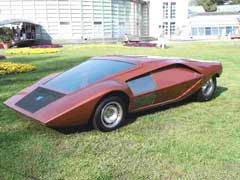
The Bertone Stratos was as radical
as the Lancia Stratos was successful.
Photo by Alessandro Gerelli.
Born of the Bertone Stratos Zero, the radical yet fully functional star of the 1970 Turin Auto Show, the rally Stratos had an almost mystical if not immaculate conception. Separate and apart from Bertone’s vision (Lancia itself had no part in the design and construction of the Bertone Stratos) was a similar dream of Cesare Fiorio, Lancia’s rally team manager.
Fiorio realized that the Fulvia HF, limited to front wheel drive, with a relatively weak body structure and only 168 hp available, would need a much more powerful replacement if Lancia was to continue to compete in the World Rally Championship. Four wheel drive at the time was not an option, so a mid-engined configuration seemed ideal.
The Bertone show car featured a mid-engined Fulvia V4, and served to reinforce Fiorio’s convictions.
Robson, with impeccable primary sources, reveals that it was not Fiorio’s vision, nor Bertone’s show car which provided the true impetus for the Stratos project; it was instead, the introduction of the Ford mid-engined purpose-built GT70 rally car at the 1971 Brussels Motor Show that inspired Lancia’s general manager, Pierugo Gobbato to call Nuccio Bertone. The noisy arrival of the Bertone Stratos Zero at Lancia headquarters proved to be the beginning of the planning and design of the production Stratos as conceived by Fiorio. Ironically, Ford never did put the GT70 into production. Instead, the GT70 lay dormant while the Lancia it inspired became a world champion many times over.
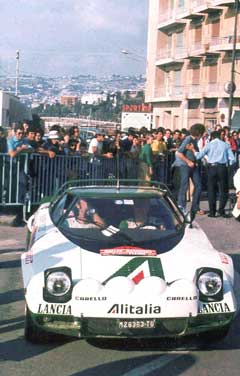
Björn Waldegärd in the Stratos
at the 1975 San Remo Rally,
which he won. Photo courtesy
Veloce Publishing.
Credit Martin Holmes Rallying.
Ford’s problem may have been the 500 cars needed to be built in order to meet homologation requirements. As Robson relates it, 10-20 are easy to build; they can be done by hand at relatively low cost. Likewise building a million is easy, given a factory and the finances. But building 500 is tough. “…laying down production jigs and fixtures for such a limited quantity was economically difficult to justify.†And that’s where Italy’s…and specifically Turin’s…almost unique ability to produce coachwork and chassis in limited numbers came in. In fact, it was Bertone who took over the major construction of the Stratos body and chassis. And since Lancia had recently been absorbed by Mother Fiat, finding an engine to replace the Fulvia four was if not easy, at least possible.
The final missing element to complete Fiorio’s dream was found in the Ferrari Dino 246GT engine and transmission. Still, from the time of conception to the birth of the first of between 400 and 500 Lancia Stratos, 43 months lapsed. Robson devotes much of the book to that birth and development of the Stratos, while the text is accompanied by both color and black and white photos.
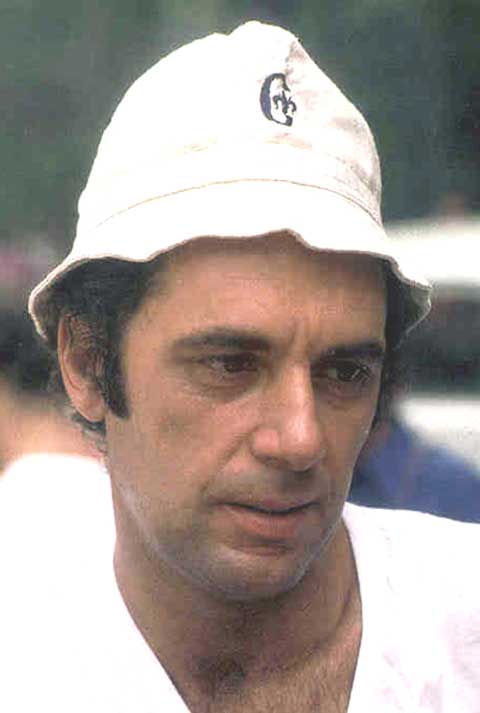
Sandro Munari. The Stratos was built with him, for him, around him and in turn he tallied up fourteen wins with his tailored Lancia. Photo courtesy Veloce Publishing. Credit Martin Holmes Rallying.
Lest we forget, a few stats on the Stratos: With a wheelbase of only 7 feet 1.8 inches and a width of 5 feet 8.9 inches, the Stratos was short, wide, and unbelievably twitchy. The Dino units purchased from Ferrari were most often used in the standard 12 valve engine with roughly 240 hp on tap. On rare occasions the 24 valve heads were used with 280 hp and even rarer was a turbocharged engine with 350 hp. At only 3 feet 7.9 inches high, and weighing only 1,958 lbs, the fiberglass Stratos was a tiny, terrible handful. But in the right hands, such as Sandro Munari and Björn Waldegärd, the Stratos was simply, unequivocally, unbeatable.
The second half of the book covers the considerable competition history of the Stratos, concentrating on the factory cars from 1974 to 1981. Robson chronicles the results of each year, providing insight regarding the use (or misuse) of drivers, including Swedish pilot Waldegärd, who was the proverbial square peg in the round hole.
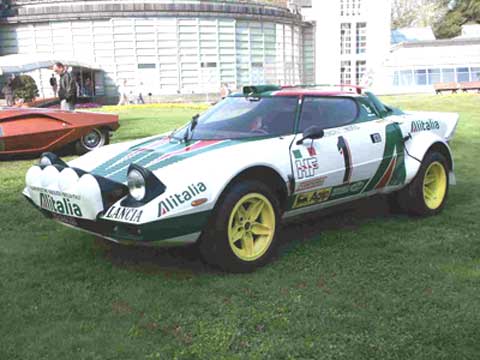
Factory cars were Marlboro sponsored,(1974) Alitalia, (1975-77 seen here) and finally, sponsored by Pirelli (1978). Photo by Alessandro Gerelli.
But of course the Lancia team, headed by Sandro Munari, won its first event (as a homologated entry) in October 1974 and never looked back. Munari alone entered 40 events with the Stratos and won 14. In all, and in the face of very tough competition, the Stratos won the World Rally Championship in 1974, 1975, and 1976, and remained competitive for another four years. The factory finally retired the Stratos, and Robson lamented. “When I heard that Fiat Lancia was withdrawing the Stratos from rallying in favour of the Fiat 131 Abarth, I would cheerfully have condemned those responsible to everlasting torment.â€
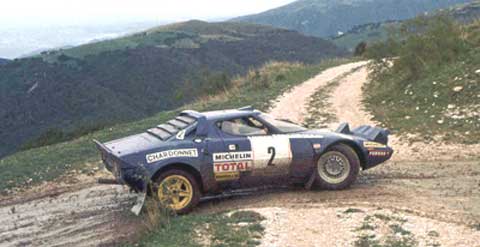
Successful privateer Bernard Darniche on his way to winning the San Martino rally in 1975. Photo courtesy Veloce Publishing. Credit Martin Holmes Rallying.
There is an index and a list of the major victories achieved by the Stratos, a history of the British Checkered Flag Stratos, and a short chapter on Stratos’s successors, particularly the 037. Robson’s book is absolutely essential for Lancia and rally enthusiasts, and great for anyone interested in Italian cars in general.
To round out your rally knowledge, Veloce Publishing (again, not us, but an excellent British publisher!!) and the prolific Robson plan a total of sixteen Rally Giant books, which will encompass the greatest rally cars beginning with the Austin Healey 3000 all the way up to the Ford Focus WRC. In addition to the Stratos, Italians will include the Fiat Abarth 131 and the Lancia Delta Integrale.
The line “objectivity with great passion always makes for great books” is brilliant, and the only mystery is why I have never heard this iconic phrase before. Did you think this up spontaneously or did you borrow the phrase from another source? I am going to print it out and put it on top of my laptop, right next to Hemmingway’s phrase, “writing is rewriting.”
Another excellent Stratos book and even more comprehensive at least as far as it’s development is “Lancia Stratos – Thirty Years Later” by Curami.
Where can I buy the Rally Giants “Lancia Stratos?????